Despite the popular belief, car speakers can sound pretty great, especially if you invest in a decent-quality aftermarket set. However, while there are very few issues with the front speakers, the ones in the back do tend to malfunction. Sometimes, they break down and need a replacement; other times, the cables wear out, and the sound quality gets bad.
Now, that’s not even the biggest problem. Most drivers complain about the rear speakers getting really quiet; no matter what they try to do, that doesn’t fix anything. There are ways to handle this, though. So, today, we’ll learn how to increase the volume of rear car speakers. We’ll also talk about amplifiers, how to install them, and more. Let’s get right to it!
Table of Contents
Method #1: Troubleshooting
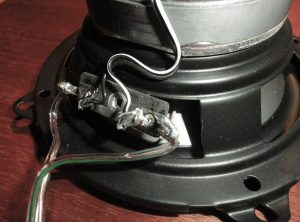
Inspecting the Fuse Box
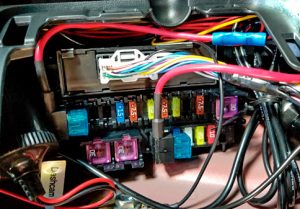
If the damage is severe, you’ll be able to see burns and cracks even before you remove the fuses. Obviously, all the faulty/damaged fuses need to be replaced; otherwise, the problem with the low-volume rear speakers won’t go away. A new set will cost you 10-15 US dollars, or even less. Hopefully, that will fix the issue.
Removing the Amp from the Chain
A decent-quality amplifier can bring a lot of positive changes to your audio system, and we’ll talk about that more in a minute. But what I want you to do right now is to turn it off. More specifically, unplug the speakers and the car stereo/head unit from the amp. Chances are, there’s nothing wrong with the speakers, and it’s the amplifier acting up. This can only be checked once you exclude it from the chain.
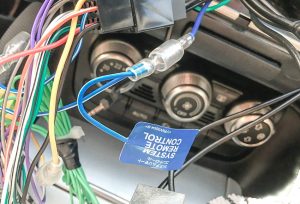
Resetting the Amp
And if the problem is not with the amplifier, I bet the settings are to blame. In some cases, car speaker amp gains are set way too high. This is done to make sure the front speakers are loud enough. However, that can also make the rear ones almost inaudible. So, dialing the gains down a bit can solve this.
What about the Phase?
Without getting into technical details, let me just say that the wrong phasing could be causing the issue. Try switching from negative to positive, or vice versa. I’m talking about the wiring, of course.
Method #2: Investing in an Amplifier
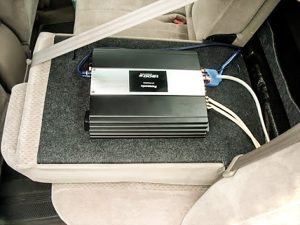
Or, if you’re a bit low on cash, look for a suitable deal in the 50-100 dollar price range. There, you’ll also be able to find excellent amplifiers that sound great and will serve you for a long time. An external amplifier will have a much higher output and will be able to power up not only the front and side speakers but also the ones in the back.
How to Install an Aftermarket Car Amp
So, you saved up some money and bought just the right amp for your car. But how do you install it properly? Here’s a short, user-friendly guide:
- First of all, find the right spot for the amp. These things generate a lot of heat, which means you gotta think about proper ventilation. The car’s trunk is a great place for it.
- Secondly buy an amp wiring kit. These are available at local stores and online for a very reasonable price.
- The next step is disconnecting the battery’s negative terminal.
- Moving on, run the power wire from the battery to the amp. More specifically, run the cable from the amp (from the wiring kit) into the fuse box; do the same with the battery cable, and connect it to the other side of the fuse holder. Don’t forget to strip the insulation (do this on both cables).
- Attach the terminal ring to the battery’s positive terminal.
- To pass the power cable from the engine compartment, use the firewall. There should be an entry point there.
- Tuck the power cable under the trim panels/carpet, and run it all the way to the amplifier.
- Next, run the turn-on wire and signal cables from the amp to the car’s stereo unit. Run them behind the dashboard. The turn-on lead on the stereo should be blue. For the RCA cables, you’ll see corresponding RCA outs on the head unit. To send a signal from the amplifier to the speakers, use 14- or 16-gauge wire – do this with each speaker.
- Oh, and don’t forget to ground the amp! Connect the ground cable to the car’s chassis for the best results. Finishing up, reconnect the negative battery terminal.
Method #3: Buying new Rear Speakers
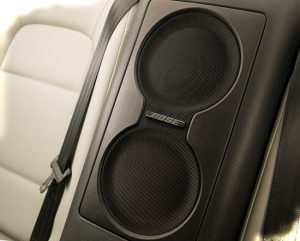
There’s a catch, though: most manufacturers don’t sell speakers separately – you’ll have to get at least a pair, and maybe even with a subwoofer. So, try your luck in places like eBay. But be very careful and make sure you’ve got the exact right match for your car stereo and the audio system; otherwise, this won’t work. That’s right: you can’t just get any speaker and expect it to work flawlessly.
Conclusion
So, there you have it – my guide on how to solve the volume issues with rear speakers. In most cases, the problem is with the cables. So inspect them thoroughly before you move on to more radical solutions. The fuse box is next on the line: it might be that you’re driving around with a faulty box.
Or maybe this is caused by faulty amp settings and wire phasing? If that doesn’t help, buying a new amp or a new set of speakers might do it for you. Just don’t rush yourself and don’t jump to any conclusions. Even if all the tips and tricks from my guide don’t seem to work, try paying a local auto shop. They may be able to help you.



Leave a Reply